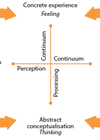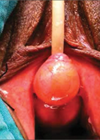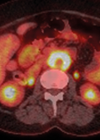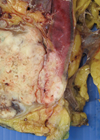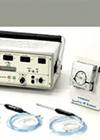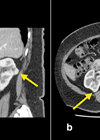Features archive for 2017
Simulation-based training of procedural skills: application and integration of educational theories
Educational theories: how familiar are we with these theories and their application in our training? As a Simulation Fellow I have been involved in teaching specific procedural skills and running full immersion simulation sessions. This experience has exposed me to...
Challenges of catheter associated urinary tract infection: is prevention better than cure?
Catheterisation is a common medical procedure in which a catheter (a hollow flexible tube) is inserted into the bladder in order to facilitate the drainage of urine. Catheters are usually passed into the bladder via the urethra, either to be...
Recent advances in the management of castration resistant prostate cancer
Castrate resistant prostate cancer (CRPC) is defined by disease progression despite androgen-deprivation therapy lowering testosterone to castrate levels. It may present as a rise in serum levels of prostate specific antigen (PSA), progression of pre-existing disease, or the appearance of...
Prolapse surgery with mesh: where do we stand in 2017? An ICS update
Background Surgery for pelvic organ prolapse (POP) is common among women. The lifetime risk of undergoing at least one surgical procedure for POP is up to 20% [1]. This kind of surgery will be increasingly important due to an ageing...
A review of the diagnosis and management of urethral caruncles
Introduction The innocuous urethral caruncle is the most common benign urethral lesion in females. It can pose a significant challenge to urologists due to the plethora of differentials and poor evidence surrounding management. In 1926, Ferrier eloquently described the macroscopic...
Peyronie’s disease: a review and update
Peyronie’s disease (PD) describes an acquired disease of the penis, which is characterised by a number of signs and symptoms. These include penile pain, curvature, palpable plaques, wasting or narrowing of the penile shaft, a hinge deformity and potentially catastrophic...
Retroperitoneal fibrosis
Introduction Retroperitoneal fibrosis (RPF) is a condition that occurs when extensive fibrosis develops in the retroperitoneum, usually centred over the anterior aspect of the fourth and fifth lumbar vertebrae. The fibrotic tissue typically surrounds the infrarenal aorta, inferior vena cava...
Sarcomatoid renal cell carcinoma
Renal cell carcinoma (RCC) represents 2-3% of all cancers [1]. It is an adenocarcinoma making up 85% of all renal malignancies. Sarcomatoid transformation is a microscopically identified feature of RCC accounting for 5% of all RCCs [2]. Known as sarcomatoid...
Thermal ablative techniques for small renal masses
The incidence of renal cell carcinoma has increased over the past decade which can be partly attributed to the increased use of imaging modalities [1,2]. Nephron sparing procedures for the management of small renal tumours have gained popularity which include...
Metabolic screening and stone-prevention in urolithiasis patients
The incidence and prevalence of kidney stones is increasing [1,2]. Significant recurrence rates are noted with 14% of patients experiencing a further episode at one year, 35% at five years, and 52% at 10 years [3]. Over 10% of stone...
Overview of partial nephrectomy techniques: influence of technology
Traditionally, radical nephrectomy was the preferred operation for kidney cancer, while partial nephrectomy was reserved for specific circumstances and essential indications such as a tumour in a solitary kidney, bilateral kidney tumours, or severe chronic kidney disease (CKD). Given the...
The scent of Ethiopia: a personal story part 2
In May/June 2016 we featured a wonderful account of Zeeshan Aslam’s first trip with Urolink to the Hawassa Referral Hospital in Ethiopia (see here). One year on we are delighted that Zeeshan has once again taken the time to provide...

